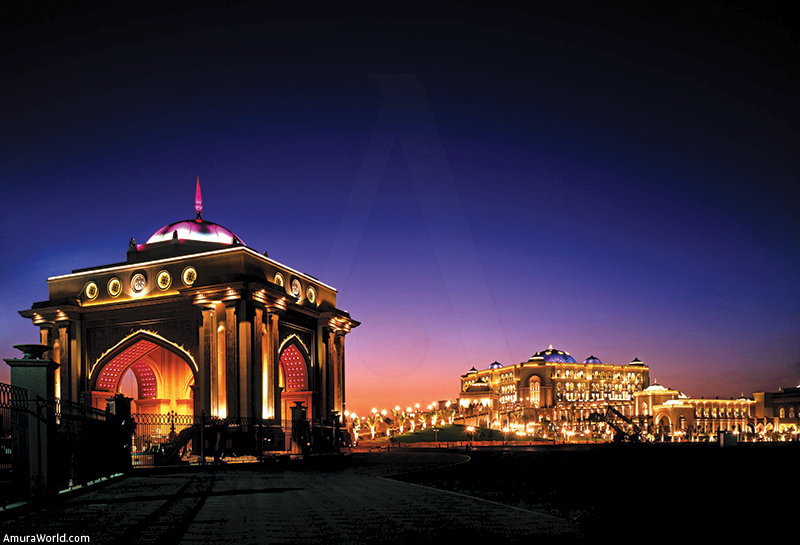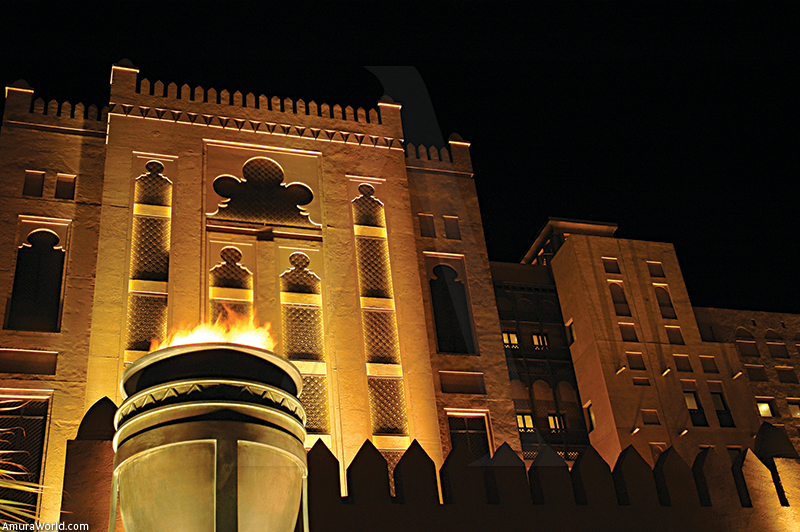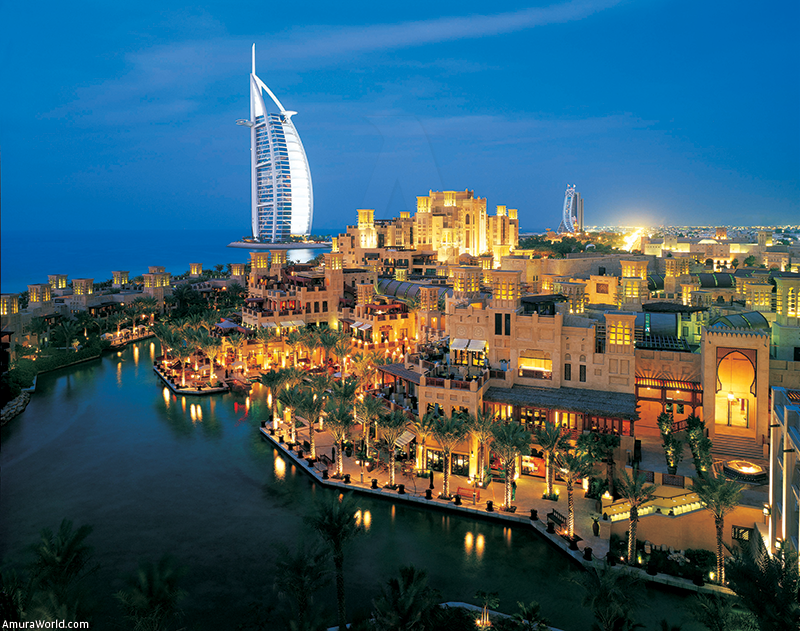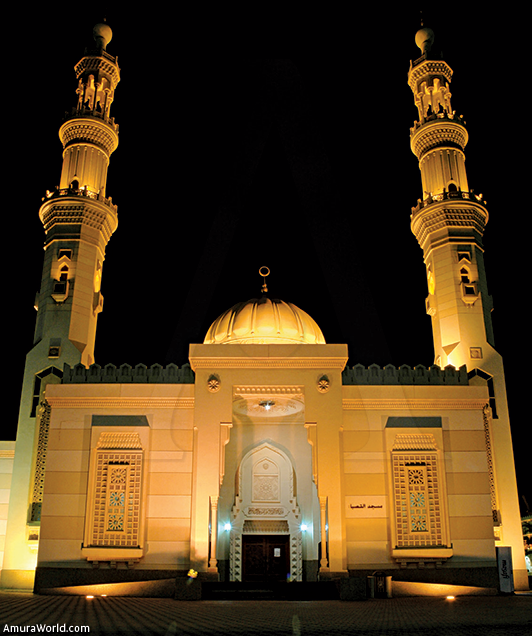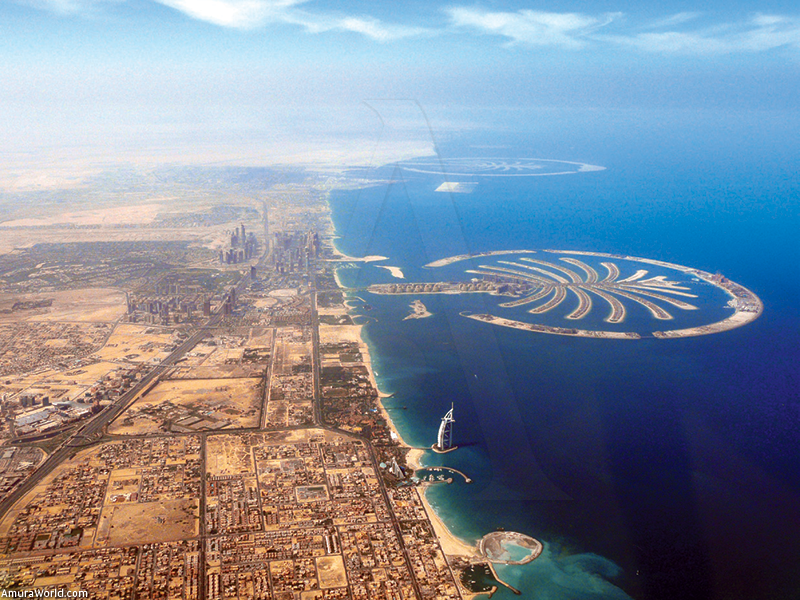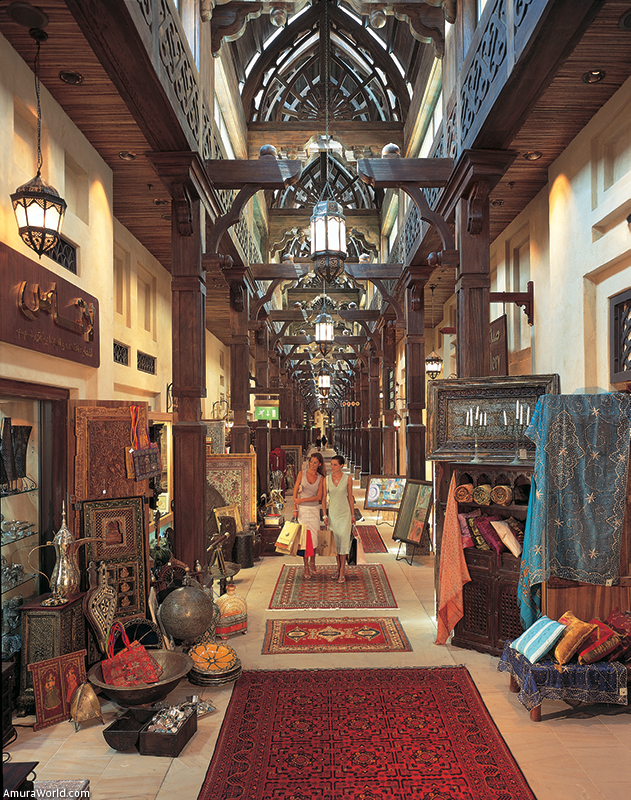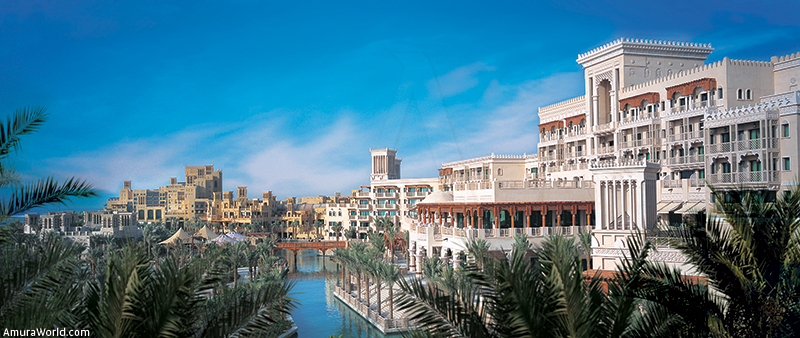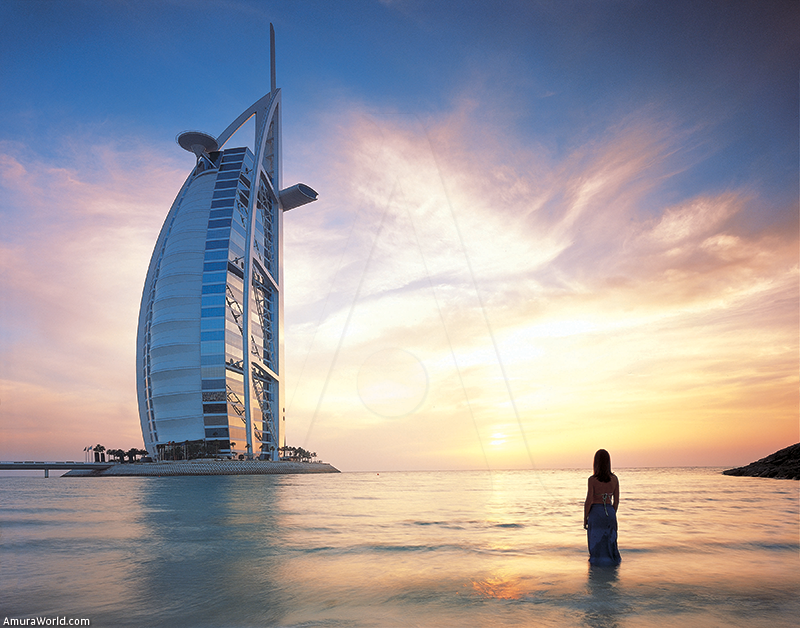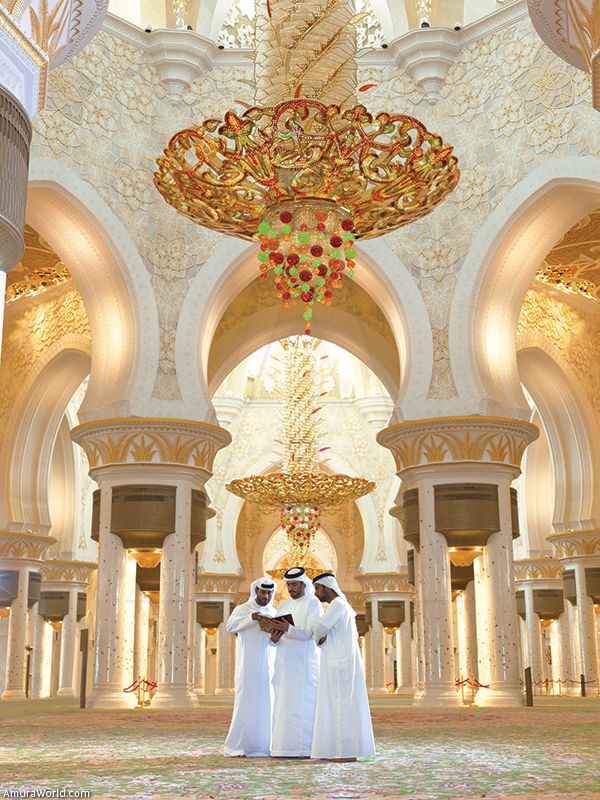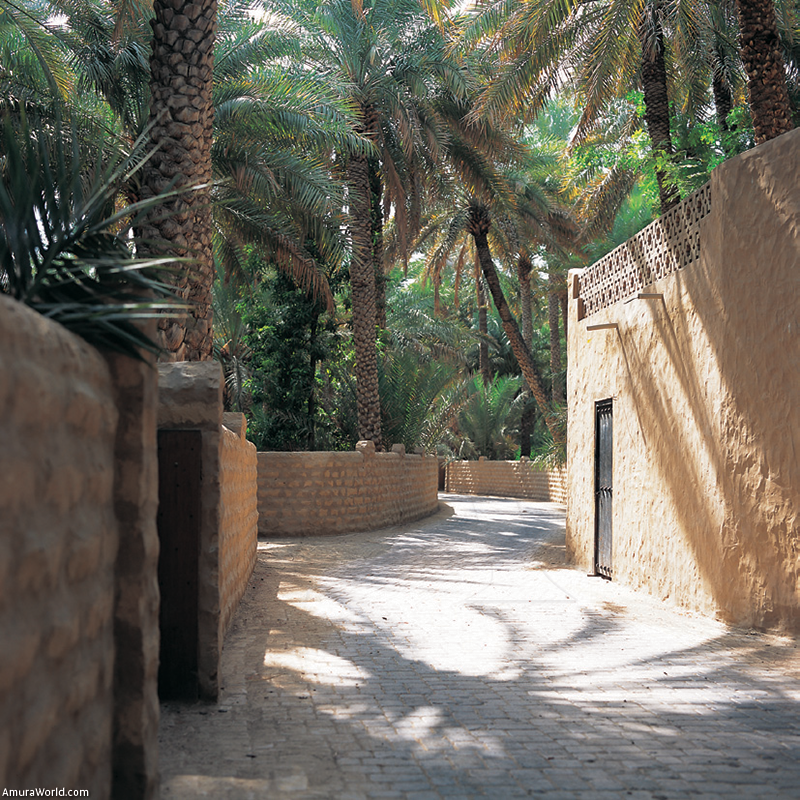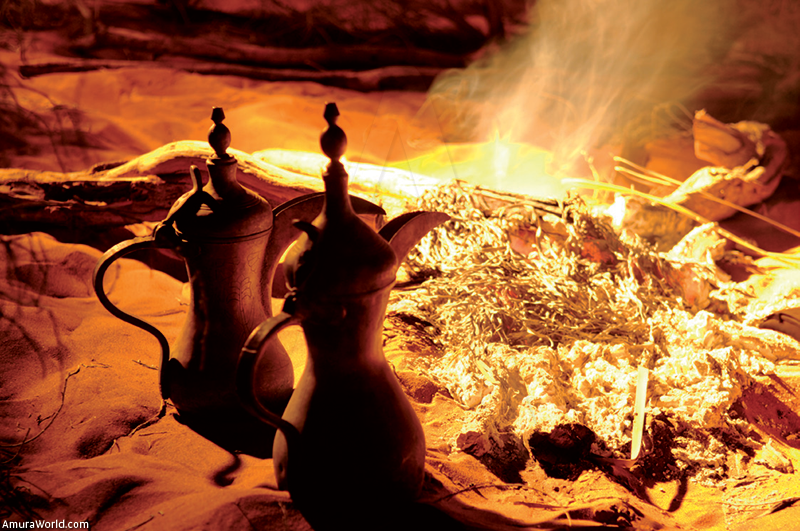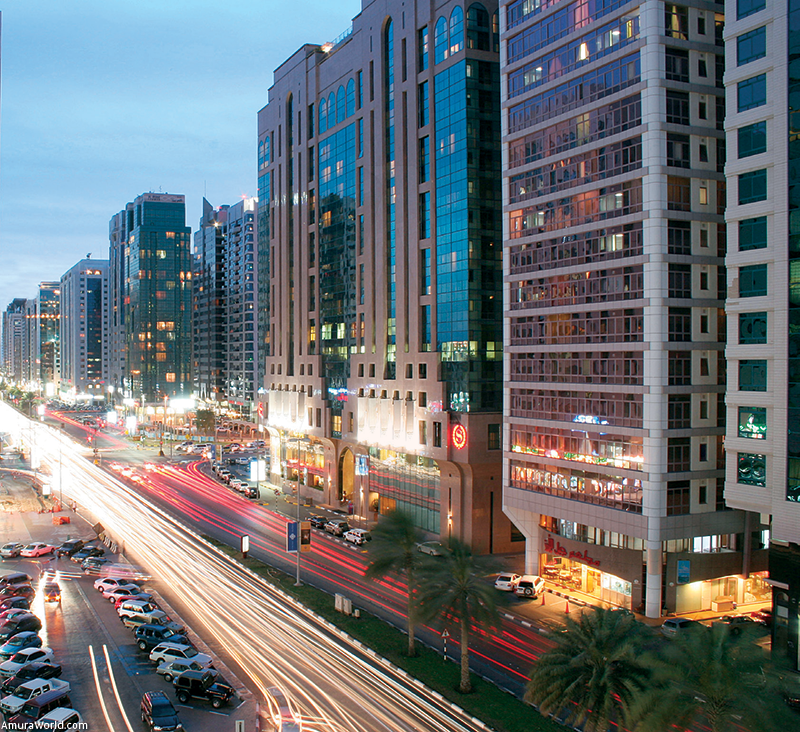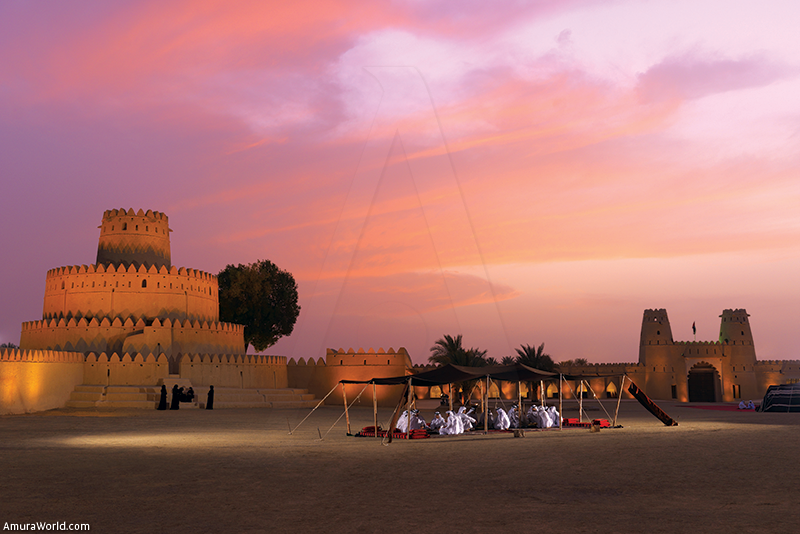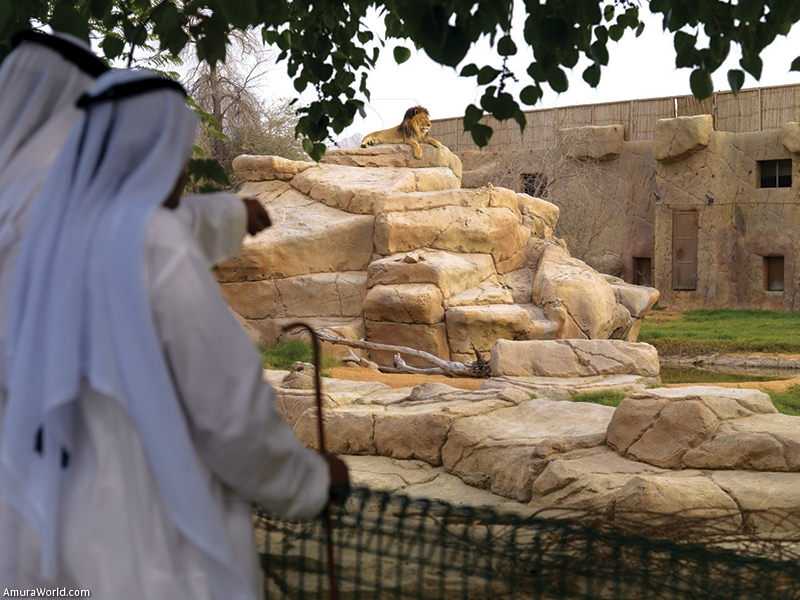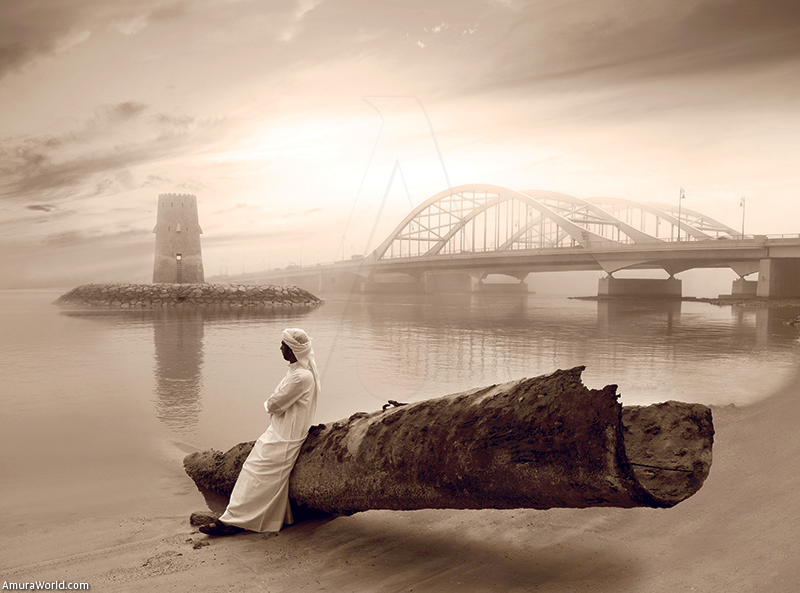Mysticism and modernity at Middle East
To travel across the Middle East has been the dream of many a traveler. Granted, its culture invites one to discover its rich tradition, its marvelous architecture, its lofty literature, and, naturally, its enchanting landscapes.
Whether you visit a beach, a city, or admires a magnificent sunset in the desert, the Middle East, by way of its mystisicm, tradition and modernity, provides unforgettable experience.
The main attractions that this destination offers, given the sheer number of impressive cities and attractive havens, are found in emirates of Dubai and Abu Dhabi. Where one can experience the tradition of the Middle East, while being in an ambience of luxury, modernity and exclusivity.
Nevertheless, it not all amounts to the excellent service, every destination is an attraction in and of itself. Given that, when one finds himself in the southeast corner of this Arab peninsula, the contrast between landscape and city generates an ambience in which possibilities seem endless.
Travelers will find it impossible to eschew the emirates of Dubai and Abu Dhabi if they wish to experience the perfect fusion of flavors, aromas, tradition and culture inside the Middle East.
Dubai
In recent years, Dubai has become one the most attractive destinations for travelers around the world. This city has been recognized as a destination that has successfully merged their ancestral heritage with the present times. The city of Dubai has grown and developed around “Dubai Creek”, a naturally occurring stream of ocean water that crosses through the middle of the Arabic Gulf, dividing the city in two; Bur Dubai and Deira, both cities boasting their own respective attractions.
Within these two sectors of the city lays a myriad of tourist attractions, which play polar opposite to the soothing ambience found in Dubai Creek, which is an attraction by itself, given that it is a perfect vantage point to admire some of the tallest buildings in the world.
Respecting Deira, it harbors quite an impressive number of attractions: the historical center of Bastakiya, the ancient souks and indoor markets, to name a few. Here, one can walk through the narrow streets and explore the Spice Souk, and the markets that sell crafts made of gold. Another popular and magnificent attraction is the Dubai Museum, which is housed inside the Al Fahidi Fort. Built in 1799 to defend the city from foreign invaders, the Fort has served as both palace, and prison. It’s collection boasts life-sized sculptures, and galleries that present Arab culture though the means of houses, mosques, gardens, the desert and its marine life.
Bur Dubai has the privilege of housing the Heritage Village, located in Shindagah, a familiar destination where weavers, potters, and craftsmen produce and sell their works. In the village that surrounds this area also you can admire a cultural microcosm within the fishing and diving facilities. Once can also admire the Saeed Al Maktoum House, a restored museum which use to serve as the residence of the ex rulers of Dubai up the year 1800.
One can reach the popular neighborhood of Jumeriah by travelling westbound by car. This place is home to some of the most luxurious hotels and entertainment plazas in the world. One can also find here sun-soaked virgin beaches, and aquatic sport centers. Jumeriah also houses the Great Mosque, which was rebuilt in 1998, and which features the tallest minaret in the world, nine grand copulas, and 45 smaller ones. It is a monument that reflects the reverence that the local people have for their culture.
Approximately 115 km southeast of Dubai, at the heart of the Hatta mountain range, lays the town of Hatta, an important historical center for the region. The two towers that dominate the skyline where previously used as defense fortifications to counterattack invaders. Ideally, one can relax at the Villa, and visit the Traditional Craftsmanship Houses, where one can acquire Palm products. Visitors can also visit the mesquite, and observe the 200 year old mosque that resides in this area.
Of course, the grandest attraction of the city, one that is also one of the most magnificent constructions of the XXI century, is the Burj Khalifa, the tallest skyscraper in the world, standing at 828 meters. It is focal point of a sprawling urban development called Downtown Burj Khalifa, a 2km2 complex located next to the Shiek Zayed Avenue. The skyscraper can be seen from practically every point of the city and its surrounding regions, absolutely dominating the Dubai skyline.
Dubai is also as shopping center haven. Whether it be gold, electronics, carpets, spices, textiles or crafts, this city caters to even the most demanding clients.
The city is also home to some of the grandest shopping centers in the Middle East, which in turn house the boutiques of some of the most luxurious firms in the world. High-couture, state-of-the-art electronics, furniture, home décor accessories, and traditional Arab crafts are all found in these locations.
Unforgettable experiences can be found while navigating through the most of antique markets and the narrow roads found at Meena Bazzar, Karama and the Naif area, all of products that have from international brands, leather or textile products and Arab perfumes.
Dubai is not only growing at a truly phenomenal speed but it is the scale, design and sheer quality of the new developments that is making the world sit up in astonishment. The city has the largest marina in the world, the largest man-made harbor, the biggest artificial island and largest motorway intersection, it also has the world’s tallest hotel, the spectacularly designed 1053 feet high, Burj-al-Arab, the only 7-star hotel in the world.
The Burj-al-Arab represents Dubai, symbolically, like the Sydney Opera House represents Sydney and the Eiffel Tower, Paris.
Dubai skyscraper, the Al Burj Tower, being constructed by Nakheel, the adventurous and highly innovative Dubai Government owned civil engineering company, will be even taller. Some even suggest that Al Burj could end up a kilometre.
Apart from the Burj-al-Arab Hotel completed in 2000, there is the beautiful, wave-shaped Jumeirah Beach Hotel; the sleek lines of the twin Jumeirah Emirates Towers; Carlos Ott’s National Bank of Dubai; Hilton Dubai Creek and several others. In fact, there are luxuriously designed 5-Star hotels all over Dubai.
International architects’ drawing boards are stacked with plans for future Dubai cities-within-cities.This city is constructing even greater wonders in the waters of the Arabian Gulf. The Palm Jumeirah, the first of three palm tree shaped islands has been completed, using sand dredged from the bottom of the sea and then blown up to form an island, in the shape of a palm, as the building land. Close to 5000 villas and luxury apartments have been built along the fronds and trunk of Palm Jumeirah. There are also hotels, restaurants, shops and other amenities.
In front of Palm Jumeirah, along the shores of Jumeirah Beach, there is a string of 5-Star Luxury hotels. Behind them is the superb Dubai Marina, the world’s largest marina, which is surrounded by luxury apartment towers and offices.
The second island of The Palm trilogy, The Palm Jebel Ali, is being constructed in Dubai Waterfront, near the man made harbour of Jebel Ali, about 45 minutes drive south of central Dubai, en route to Abu Dhabi.
Dubai Waterfront is being created with the vision of becoming an unparalleled getaway for residents and visitors alike, with an array of luxury hotels, beachside villas, shoreline apartments, dive sites, a variety of entertainment and leisure activities and even water homes built on stilts that spell out an Arabic poem written by his Highness Sheikh Mohammed bin Rashid al Maktoum, the far-sighted ruler of Dubai.
Further north in Dubai, above Port Rashid and Dubai Creek, the even larger Palm Deira is under construction in the waters of the Gulf. This is the third and final part of the Palm trilogy. Just off-shore from Deira, the old bustling commercial district north of the Creek, Deira Island is being created, using dredged sand from the bottom of the Gulf.
If the Palms appear to be fantastic feats of marine engineering, another scheme out in the waters of the Arabian Gulf, is even more mind-boggling. This is known as The World. It is being constructed about three miles off Jumeirah Beach, in between The Palm Jumeirah and Palm Deira.
“The World” consists of sand islands constructed from dredged sand, in the shape of a world map! From the sky, the shape of The World will be clear. Businesses and individuals from the various countries represented in The World, will be able to purchase their own particular island and build hotels, restaurants etc to represent their national culture on it.
The biggest, the Mall of the Emirates, has over 400 shops selling every product imaginable. It even has a Carrefour supermarket, Harvey Nicholls, Debenhams and a myriad designer-label shops, plus a multi-screen cinema. It also has a massive children’s play area called Magic Planet, and dozens of cafes and restaurants.
Another, very classy, shopping mall is BurJuman in Bur Dubai, in the city centre. This has over 300 stores selling top designer labels, as well as leading high street names. There are huge shopping malls all over Dubai, plus the older Arab souqs. The Gold Souq has to be seen to be believed.
Dubai’s social calendar is as hectic as the city itself; international sports events, shopping and entertainment conventions, music festivals and cultural programs unfold in indoor and outdoor venues throughout the entire year.
The Dubai World Cup, the grandest of all of the horse races in the world, the international jazz festival, and the Dubai Shopping Festival are just a few examples of these. International art exhibitions, as well as regional ones, are regularly showcased inside a myriad of galleries around the city.
Many of these events are carefully planned so as to not coincide with the certain dates on the lunar calendar and the sacred month of Ramadan. What follows is a guide for travelers that details when the following events will occur:
January: The Dubai Marathon, Dubai Shopping Festival, Dubai International Jazz Festival, Dhow Emirates Sailing Cup, Dubai International Regatta Sailing Week.
February: The Terry Fox Race, Dubai Tennis Championships.
March: Dubai Desert Golf Classic World Cup, Dubai Kite Surfing International Challenge.
April: World Jewelry Showcasing.
May: Mainly local and sporadic international events.
June: Dubai Summer Surprises, UAE National Sailing Championship.
July: Dubai Summer Surprises.
August: Dubai Summer Surprises.
September: TI Golf Exposition (GITEX), Cares Festival
October: UAE Desert Challenge
November: Horse Racing season, Dubai National Sailing Show
December: Ruby 7’s, Dubai Air Show, Dubai Grand Prix, National Holiday
This city is an exciting destination year round. The city offers an unlimited opportunities for rest and recreation, be it a walk through a verdant garden with family, a day of adventures through the Persian Gulf, and even a mime show inside on of the cities public baths.
Beaches: A few beaches are part of the chain of hotels in the area, where one can spend the day in the sand and the waters of the Persian Gulf. Other beaches and waterfronts – the Corniche and Cala – are not accessible to the public, yet they do offer a wide array of water-based activities for members.
Safari Desert: One of the main attractions is the ever popular safari through the desert; a unique experience that combines an adventurous ride inside a 4WD vehicle through sand dunes populated by camels; the spectacle of belly dancers, Henna body painters and, finally, dinner under a moonlit sky. Other activities include sand skiing, sand boarding and go-karting.
Fishing: The warmth of the Gulf attracts a wide variety of marine species, and several local enterprises offer exclusive fishing trips in deep sea waters.
Golf: Dubai houses one of the premier international golf centers that caters to Asian and European GPA events. Golfers can also choose between clubs and courses, ranging from small ones, for practice, to professional-level courses for the most advanced players.
Abu Dhabi
A visit to Abu Dhabi is incomplete without dropping by the charming Heritage Village, which overlooks the Corniche, near Abu Dhabi’s breakwater and a short distance away from the imposing Marina Mall.
Visitors get a whiff of what life was like for Abu Dhabi’s Bedouin by viewing a reconstruction of their traditional desert encampment, where goats roam, and coffee roasts on a fireplace. The Heritage Village also features a reconstruction of the old well and irrigation system, mud-brick houses, old fishing villages and suoqs (bazaars).
Curiosly, the Heritage Village features several workshops where metal work, pottery and weaving is done, and where craftsmen occasionally let visitors try their hand on such skills. A spice shop within the Heritage Village treats the visitor’s culinary senses and a small souvenir also shop sells handicraft items. A mini-museum featuring artifacts such as jewelry, weapons and coffee pots, amongst others, rounds up the Heritage Village experience.
There are no restrictions for photography here. Hence, visitors are encouraged to keep their camera handy for photo opportunities with the friendly local craftsmen amidst the exotic landscape.
Sheikh Zayed bin Sultan Al Nahyan Mosque is probably the most imposing religious and national landmark in Abu Dhabi to date. It is also arguably one of the most important architectural treasures of the contemporary UAE society - and one of the most beautiful in the world - initiated no less by the late president HH Sheikh Zayed bin Sultan Al Nahyan, who is fondly thought of as the father of UAE. The Sheikh Zayed Bin Sultan Al Nahyan Mosque, popularly called Grand Mosque by local residents, is seen as a “globally unifying” landmark from its conception to completion, bringing together designers, materials and suppliers from nearly every corner of the globe: Italy, Germany, Morocco, India, Turkey, Iran, China, Greece and the UAE. Natural materials were chosen for its design and construction, which include marble, stone, gold, semi-precious stones, crystals and ceramics.
Hili Archaeological Gardens, situated within a public garden, is accessible from the Dubai Road, some 10 kilometres outside Al Ain. Visitors, including those with children, can enjoy the public garden whilst having a picnic, especially during the cooler months. This public garden features an important site where remnants of the Bronze Age settlement were excavated and restored. This site yielded a tomb containing the remains of well over 200 individuals as well as valuable artefacts, including ceramic and soft-stone vessels imported from Iran or Baluchistan that are now displayed at the Al Ain Museum. Hili is near Fossil Valley, an area which was covered by water many thousand years ago, and hence, serves as a mini-reservoir of countless fossils.
The historic Qasr Al Hosn Palace, or White Fort, lies next to Abu Dhabi’s Cultural Foundation. Built in 1761, the palace was the official residence of the ruling Al Nahyan family until 1966. A view of this centuries-old structure provides a glimpse at the ruling family’s history and traditions. Entrance is free but presently there are no guided tours.
Bateen Shipyard is a busy landmark that bears an unmistakable vestige of the dhow or boat-building heritage of Abu Dhabi. The shipyard is located on the west side of Abu Dhabi Island, near the Intercontinental Hotel. However, most of the boats being built here are no longer the traditional trading boats that you see in museums; rather these boats are the “sleek racing types, some with carbon fibre masts.” Photography is allowed, although it is courteous to ask permission first.
The Emirates Palace is a luxurious hotel managed by The Kempinski Group, probably the most expensive hotel ever built in the world, costing the Abu Dhabi government roughly US$3 billion. Often mistaken as the presidential palace, Emirates Palace features 400 rooms and suites, and most of its interior décor is in marble or gold. Several classical and popular music and ballet performances have been staged at the Emirates Palace’s Conference Centre since its inauguration.
The Abu Dhabi Music and Arts Foundation organizes regular concerts which are usually staged at the Cultural Foundation Auditorium or at the Emirates Palace Auditorium.
Islands
Unknown to most, the Abu Dhabi emirate is archipelagic, where nearly 200 islands are strewn along its coast. This means island-hopping is a popular pastime among affluent residents who have boats and even for non-boat owners, where public transportation is available. Since some islands are presently undergoing major renovations, access may be limited for some time.
Desert Islands
Desert Islands is a nature-based tourism destination nestled in the Arabian Gulf off the western coast of Abu Dhabi. It comprises eight islands, which include the Sir BaniYas Island Nature Reserve, the historical Dalma Island and the untouched Discovery Islands.
Sir BaniYas Island is the first of the destination’s components to open to guests. A working wildlife sanctuary, the 87 sq km island gives guests the opportunity to stay in a five-star resort and explore the unique environment where thousands of animals roam.
The Arabian Wildlife Park on Sir BaniYas Island is home to more than 10,000 free roaming animals and takes up more than three quarters of the island.
Yas Island.- Yas Island is the emirate’s sports and leisure centre. It is only about 30 minutes drive off Abu Dhabi, and will be home to a Ferrari Theme Park.
Bu Tinah Island.- Located approximately 130km west of Abu Dhabi, Bu Tinah is part of the Marawah Marine Biosphere Reserve, which was the first marine biosphere reserve in the region to be recognized by UNESCO. It is an island which boasts rich marine and terrestrial ecosystems worthy of global recognition.
The coral reefs of Bu Tinah continue to thrive despite a continual rise in temperature and salinity. Their survival has given researchers insight into coral reef survival elsewhere in the world in the face of global warming. Moreover, the sheltered side of the island regularly undergoes tidal inundation which allows for healthy mangrove to grow up to 5 meters in height.
Dugongs, considered threatened under the IUCN redlist, have been observed among its seagrass meadows. An estimated 650 individual dugongs have been spotted in the summer, while 835 individuals have been spotted in the winter. Little human activity in the area has created for a natural sanctuary for the dugongs.
Several migratory birds use the island as a stopover to rest and forage during their migration route from central Asia to Africa. 4-5 active osprey nests have been regularly recorded on the island during successive breeding seasons.
Saadiyat Island.- Saadiyat Island to the east of the Corniche, is being transformed into a luxury leisure and cultural destination. A massive, multi-billion dollar development project that includes world-class entertainment centres, museums, resorts, upscale residences and business centres are currently being built on the natural island. Saadiyat Island will house around 150,000 residents. The population size of Saadiyat Island might escalate further. In fact, interested tourists have been mushrooming in the airports for flight toward Abu Dhabi. The two ten-lane causeways will connect the Saadiyat Island to Abu Dhabi.
Al Futaisi Island.- A bird spotter’s paradise, this island – five kilometres south of Abu Dhabi city – offers a range of activities such as nature trips via a local bus tour or through bicycles. A stable in the island houses purebred Arabian horses as well as camels, which can take visitors for rides. Those planning to stay overnight or for a few days may reserve accommodation in the island’s well appointed chalets and suites. For those who plan a quick visit, a minimum fee of AED 100 (adults) included of boat transportation to and from the island. It also entitles visitors to use the island’s beach and swimming pool amenities. Entrance is free for children seven years old, or younger.
Samaliya Island.-The Samaliya Island, located 12 kilometres off the coast of Abu Dhabi is unique in many ways. Sprawling over an area of 13,448 square kilometres and a perimetre of 21.7 kilometres, Samaliya is around 0.2 to 0.5 metres above sea level.
Sixty-one per cent of the island is sandy terrain, while clay and muddy terrains constitute 22 per cent and 17 per cent respectively. The island is divided into six major areas, Qassar, Umm Lihal, Al Zabara, Qassar Al Mushj, Qasbah, QassarAlabyad and Samaliya.
Samaliya is rich in bio-diversity, including a marine environment with its rich saline plants, mangroves and other marine plants, fish, turtles, snakes and sea birds. The island has successfully protected its land environment, including its old buildings and roads. It takes a 20 minutes boat ride for a visitor to cross from Abu Dhabi to Samaliya.
Dalma Island.- Further off the west coast relatively near Sir BaniYas, is the island of Dalma, which is known for yielding some of the region’s “earliest evidence of date palm cultivation along with sherds of Ubaid, or Mesopotamian pottery and finely flaked stone tools.” Presence of wells (reportedly about 200) that supply the island with fresh water indicate that there were permanent residents in the island for quite sometime now. Dalma’s famous wells are believed to have supplied water to the main Abu Dhabi Island until the 1950s. The evidence of imported pottery also indicates the presence of a thriving maritime trade involving this island as far back as 6,000 years ago.
Dalma is envisioned by the Abu Dhabi Tourism Authority as a “heritage sanctuary” that will build upon the existing local fishing and dhow or boat-building culture. An archaeological museum, agricultural research centre, a hospitality and tourism school as well as luxurious holiday homes are likewise to be built here shortly. Dalma Island is home to between 5,000 and 6,000 people, both locals and expatriates, as of end 2006.
Al Reem Island.- Located approximately 600 meters away from Abu Dhabi’s coast, Al Reem Island will be the largest and most impressive tourist developments in the world. The development will be the city’s hallmarks. The island will house hotels, restaurants, gardens, museums, an aquarium, amusement parks for children and a wildlife reserve.
Text: AMURA ± Photo: Abu Dhabi Tourism Authority, Flickr, Kempinski Hotels, Dreamstime,Jumeirah Hotels

